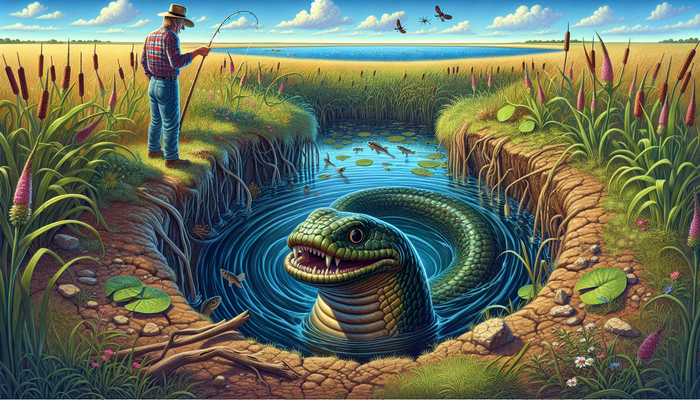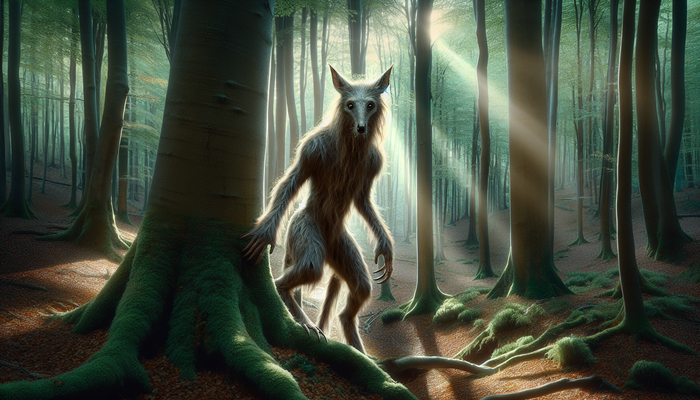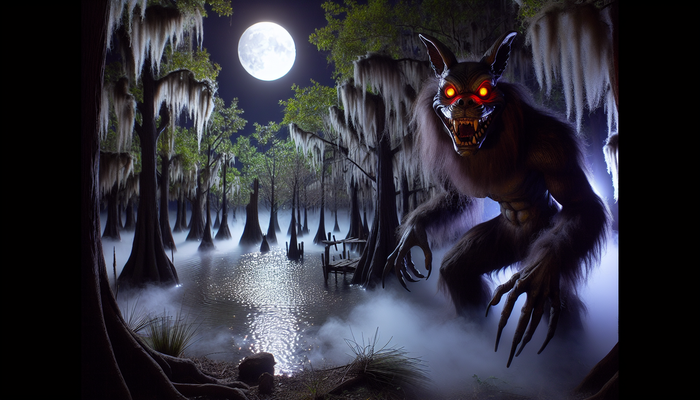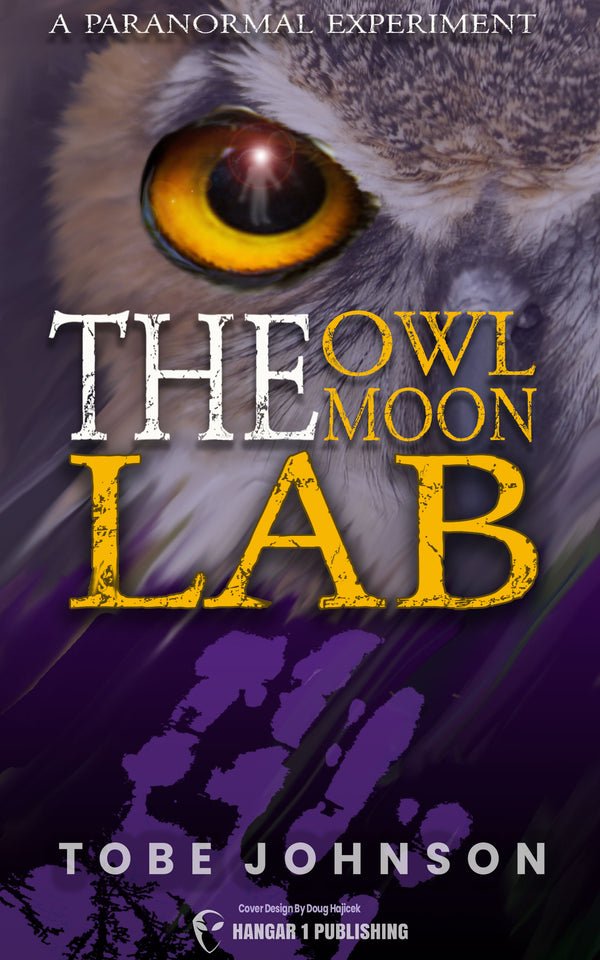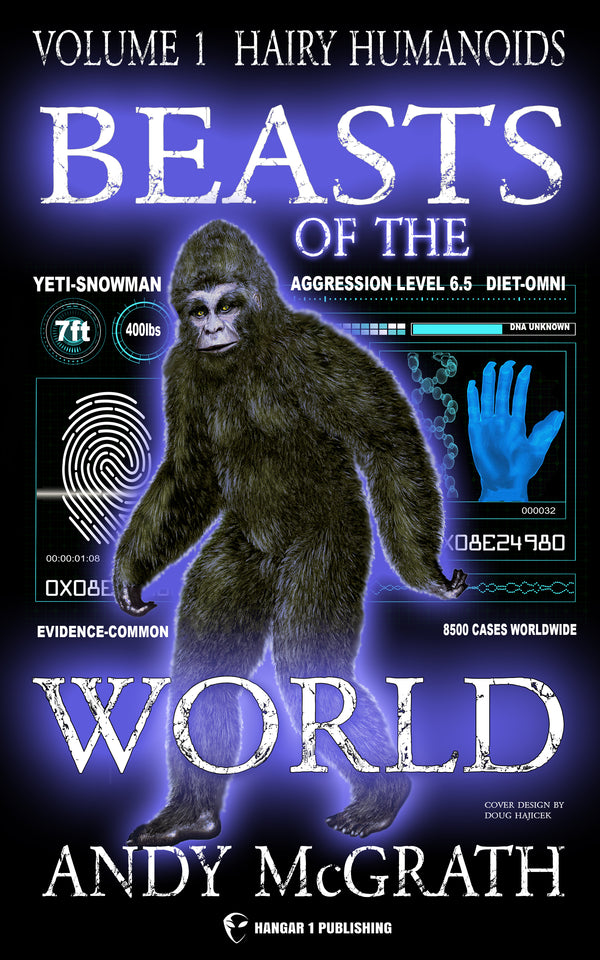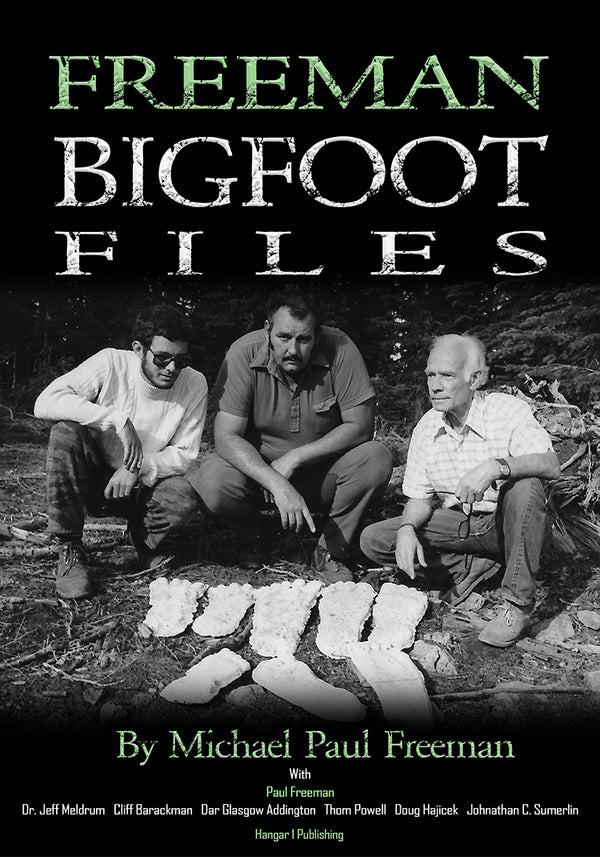Connecticut's Bigfoot Encounters and Sightings
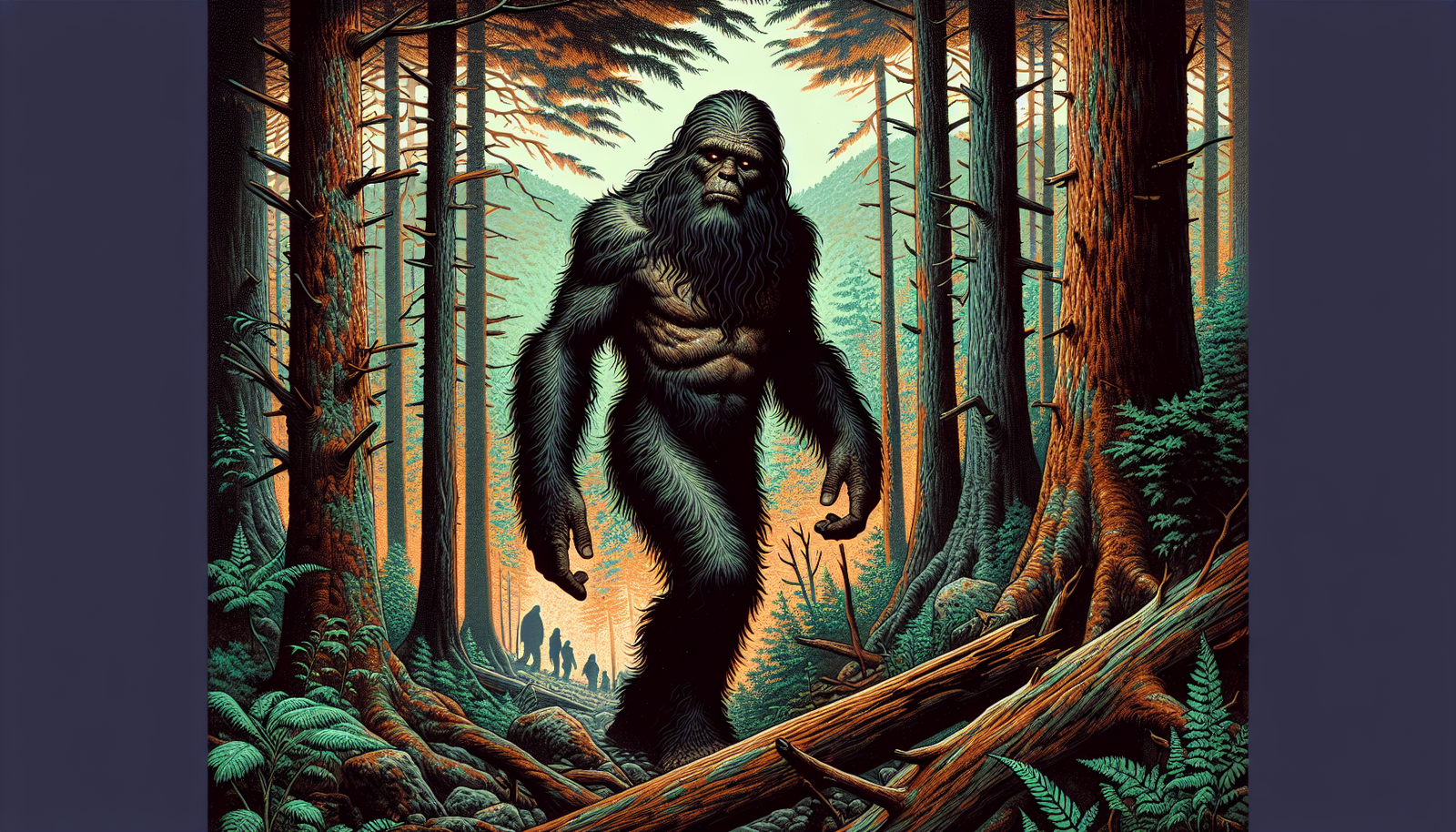
By Wade Beaumont, Cryptozoologist
A crisp autumn evening in the heart of Connecticut's wilderness. The leaves rustle gently in the breeze, and the moon casts an eerie glow across the landscape. Suddenly, a twig snaps in the distance, and a shadowy figure emerges from the treeline—tall, hairy, and unmistakably humanoid. This, my friends, is the stuff of legends. This is the domain of Bigfoot.
Now, I know what you might be thinking. Bigfoot? In Connecticut? Surely, you jest! But hear me out. As a lifelong researcher of the unexplained, I've come to learn that the Nutmeg State is a veritable hotbed of Sasquatch activity. From the legendary Winsted Wildman to modern-day sightings that defy explanation, Connecticut's rich history of Bigfoot encounters reveals a complex and mysterious phenomenon that continues to captivate believers and skeptics alike.
So, grab a cup of coffee, settle in, and join me on a journey through the wilds of Connecticut as we uncover the mysteries of the state's most elusive resident. Trust me, you're in for one hell of a ride.
The Legend of the Winsted Wildman: Connecticut's First Bigfoot Encounter
Our story begins way back in 1895, in the sleepy town of Colebrook. It was here that town selectman Riley Smith had a close encounter of the hairy kind while out picking blueberries with his trusty bulldog. As the story goes, Smith's dog suddenly became spooked, whimpering and cowering with its tail between its legs. Moments later, a "large man, stark naked, and covered with hair all over his body" burst forth from a nearby clump of bushes.
Smith, being the keen observer that he was, described the creature as a "wild, hairy man of the woods, six foot in height" with "black hair [that] hung down long on his shoulders" and a "body [that] was thickly covered with black hair." He noted that the Wildman, as it came to be known, was "remarkably agile" and "a muscular, brawny man, a man against whom any ordinary man would stand little chance."
Well, let me tell you, news of Smith's encounter spread like wildfire. Over the next few weeks, reports of the Wildman's antics poured in from all over. Folks claimed to have seen the creature stealing chickens, being spotted by visitors from New York, and even being chased by the local police chief. It was like something straight out of a dime novel!
The media had a field day with the story, and before long, reporters from all across the region were descending upon Winsted, hoping to catch a glimpse of the elusive beast. The town even organized a search party, over 100 men strong and armed to the teeth, to track down the Wildman. But despite their best efforts, the creature managed to give them the slip.
Now, here's where things get really interesting. Fast forward nearly 80 years to the 1970s, and guess who makes a reappearance? That's right, the Winsted Wildman! This time, the creature was spotted by two young men near Crystal Lake Reservoir and by two couples parked at Rugg Brook Reservoir. The descriptions they gave were remarkably similar to those from Smith's original encounter.
So, what are we to make of the Winsted Wildman? Was it just a case of mass hysteria, fueled by sensationalized newspaper reports? Or was there something more to the story? The Wildman's uncanny ability to evade capture, despite extensive search efforts, certainly raises some eyebrows. And the fact that sightings continued decades later suggests that there may be more to this legend than meets the eye.
Litchfield County: Connecticut's Bigfoot Hotspot
Now, if you're looking for Bigfoot in Connecticut, there's one place you absolutely have to check out: Litchfield County. This rugged, heavily forested region in the northwest corner of the state has been a hotbed of Sasquatch activity for decades.
According to the Bigfoot Field Researchers Organization (BFRO), Litchfield County boasts the highest number of credible Bigfoot sightings in the entire state—a whopping 11 reports that have been vetted by the organization's investigators. That's a mighty impressive tally, especially when you consider Connecticut's relatively small size compared to other Bigfoot hotspots like the Pacific Northwest.
So, what is it about Litchfield County that seems to attract these elusive creatures? Well, for starters, the region is chock-full of remote, heavily wooded areas that provide plenty of cover for a large, reclusive animal like Bigfoot. We're talking dense forests, deep ravines, and sprawling wetlands—the kind of terrain that's perfect for a creature that wants to stay hidden from prying eyes.
But it's not just the geography that makes Litchfield County a Sasquatch paradise. The region is also home to a diverse array of wildlife, including black bears, deer, and even the occasional moose. For a creature like Bigfoot, which likely relies on a varied diet to survive, this abundance of potential prey could be a major draw.
Of course, we can't talk about Litchfield County's Bigfoot activity without mentioning some of the most notable sightings in the area. Take, for example, the 2007 encounter reported by a 26-year-old man who claimed to have seen a Bigfoot-like creature with "black and leathery" skin in an open field. Or the 2018 sighting of a massive, 8-foot-tall creature on the Wilbur Cross Parkway.
These reports, along with the many others that have emerged from Litchfield County over the years, paint a compelling picture of a region that is truly a magnet for Bigfoot activity. Whether it's the rugged terrain, the abundant wildlife, or some other factor we have yet to uncover, there's no denying that something strange is afoot in this corner of Connecticut.
Diversity in Connecticut's Bigfoot Sightings: More Than Just the Classic Bigfoot
Now, when most folks think of Bigfoot, they picture a towering, hairy, man-like creature lumbering through the forest. And while that classic description certainly fits many of the sightings reported in Connecticut, it's far from the only one.
In fact, one of the most intriguing aspects of the state's Bigfoot lore is the sheer diversity of creatures that have been spotted over the years. Take, for example, the "Lemur-like" creature that was reportedly seen on the shores of Lake George, just across the border in New York, back in 1990.
According to the witness, this bizarre entity was "brownish in color and standing straight up with its arms at its side," with a "pale face, and expressive eyes and mouth." Perhaps most unsettling of all was the creature's "deranged smile or smirk"—a far cry from the stoic, almost human-like expressions often attributed to Bigfoot.
But the oddities don't stop there. In 2009, a woman in Windham County reported seeing a creature with glowing red eyes outside her home in the dead of night. The witness described the entity as being around 7 feet tall, with eyes that were "set farther apart than human eyes, with possible light grey skin under each eye."
Now, I've been around the block a few times when it comes to Bigfoot research, but I have to admit, these reports are enough to give even a seasoned investigator like myself pause. Could it be that there are multiple species of Bigfoot-like creatures roaming the forests of Connecticut? Or are we dealing with something even stranger—perhaps entities that defy our understanding of the natural world altogether?
These are the kinds of questions that keep me up at night, poring over witness reports and scouring the woods for clues. Because if there's one thing I've learned in all my years of Bigfoot research, it's that the truth is often stranger than fiction.
Bigfoot's Elusive Nature: Theories and Speculations
One of the most frustrating things about studying Bigfoot is the creature's uncanny ability to evade capture and seemingly vanish into thin air. It's a phenomenon that's been reported time and time again, from the earliest encounters with the Winsted Wildman to modern-day sightings across Connecticut and beyond.
Take, for example, the accounts of the Wildman's remarkable agility and elusiveness back in 1895. Despite the best efforts of search parties and law enforcement, the creature always managed to stay one step ahead, disappearing into the dense forests of Colebrook without a trace.
Fast forward to more recent times, and we see a similar pattern emerging. Witnesses describe Bigfoot as having an almost supernatural ability to blend into its surroundings, vanishing from sight at a moment's notice. It's enough to make you wonder if there's more to this creature than meets the eye.
Some researchers have suggested that Bigfoot may possess abilities that defy our understanding of the natural world. Could it be that these creatures are able to manipulate their environment in ways that allow them to avoid detection? Or perhaps they possess some kind of interdimensional or paranormal qualities that enable them to slip between the cracks of reality itself?
It's a wild idea, to be sure, but it's one that's gained traction among certain circles of Bigfoot enthusiasts. After all, if we're dealing with a creature that has managed to elude capture and scientific study for so long, it stands to reason that there may be more to the story than a simple flesh-and-blood animal.
But there's another possibility to consider as well. Many indigenous cultures across North America have long-standing traditions and stories about large, hairy, humanoid creatures that bear a striking resemblance to Bigfoot. From the Sasquatch of the Pacific Northwest to the Windigo of the Northeast, these legends suggest that Bigfoot-like beings may have been a part of the landscape for centuries, if not millennia.
Could it be that the creatures we now call Bigfoot are the same ones that have been known to Native American cultures for generations? And if so, what does that say about their true nature and origins?
These are the kinds of questions that keep Bigfoot researchers like myself up at night. Because as much as we may want to believe that Bigfoot is a simple, undiscovered species of animal, the evidence suggests that the truth may be far more complex and mysterious than we ever imagined.
The Allure of Connecticut's Bigfoot Lore
There's something about Connecticut that seems to lend itself to Bigfoot sightings. Maybe it's the state's unique blend of remote wilderness and dense population centers, or maybe it's just something in the water. But whatever the reason, there's no denying that the Nutmeg State has a rich and enduring history of Sasquatch encounters.
Part of the allure, I think, lies in the sheer mystery of it all. Despite decades of sightings and investigations, we still know so little about these creatures. Are they flesh-and-blood animals, as some researchers believe? Or are they something more otherworldly, as the legends and stories of indigenous cultures suggest?
The fact is, we may never know for sure. And in a way, that's part of what makes the Bigfoot phenomenon so captivating. It's the ultimate unsolved mystery, a riddle wrapped in an enigma, shrouded in a cloak of tantalizing possibilities.
But there's another factor at play here as well. In a world that often feels increasingly disconnected from the natural world, the idea of a creature like Bigfoot holds a certain romantic appeal. It's a reminder that there are still wild places out there, untamed and unexplored, where anything is possible.
For many people, the search for Bigfoot is about more than just finding a rare or undiscovered animal. It's about reconnecting with something primal and elemental, something that speaks to the deepest parts of our being. It's about the thrill of the hunt, the excitement of the unknown, and the hope that maybe, just maybe, there's still some magic left in the world.
And that, I think, is what keeps people coming back to the Bigfoot legend, year after year, decade after decade. It's the promise of something extraordinary, something that defies explanation and challenges our understanding of the world around us.
So whether you're a die-hard believer or a skeptical observer, there's no denying the enduring power and fascination of Connecticut's Bigfoot lore. It's a testament to the human spirit, to our unquenchable thirst for knowledge and our boundless capacity for wonder.
And who knows? Maybe one day, we'll finally crack the code and uncover the truth behind these elusive creatures. But until then, the mystery endures, and the search goes on.
Investigating Connecticut's Bigfoot Sightings: Methods and Challenges
Now, I know what you might be thinking. With so many Bigfoot sightings and encounters reported over the years, surely there must be some hard evidence out there to prove these creatures exist, right?
Well, that's where things get a bit tricky. You see, investigating Bigfoot sightings is no easy feat. It takes a special kind of dedication, patience, and know-how to even begin to scratch the surface of this enduring mystery.
First and foremost, you've got to have a way to collect and evaluate all those eyewitness reports that come pouring in from across the state. That's where organizations like the Bigfoot Field Researchers Organization (BFRO) come in. These folks are the real deal when it comes to investigating Sasquatch sightings, and they've got a rigorous process in place for vetting and analyzing each and every report that crosses their desk.
But collecting reports is just the beginning. To really get to the bottom of the Bigfoot mystery, you've got to be willing to get your hands dirty and hit the ground running. That means conducting field investigations in the areas where sightings have been reported, looking for physical evidence like footprints, hair samples, and other signs of Sasquatch activity.
It's grueling work, let me tell you. You're talking about trekking through some of the most remote and rugged terrain Connecticut has to offer, often in the dead of night, with nothing but a flashlight and your wits to guide you. It takes a special kind of person to willingly put themselves through that kind of ordeal, day after day, year after year.
And even if you do manage to find some physical evidence of Bigfoot's presence, that's only half the battle. You've still got to contend with the fact that these creatures are incredibly rare and elusive, which makes collecting conclusive proof a daunting challenge even under the best of circumstances.
There's also the issue of misidentification and hoaxes to contend with. With so much interest and excitement surrounding the Bigfoot phenomenon, it's inevitable that some people will try to capitalize on the hype by faking sightings or evidence. That's why it's so important for researchers to approach each and every report with a healthy dose of skepticism and a commitment to rigorous, scientific analysis.
From Bigfoot to UFOs: Hangar 1 Publishing Has You Covered!
Explore Untold Stories: Venture into the world of UFOs, cryptids, Bigfoot, and beyond. Every story is a journey into the extraordinary.
Immersive Book Technology: Experience real videos, sights, and sounds within our books. Its not just reading; its an adventure.



